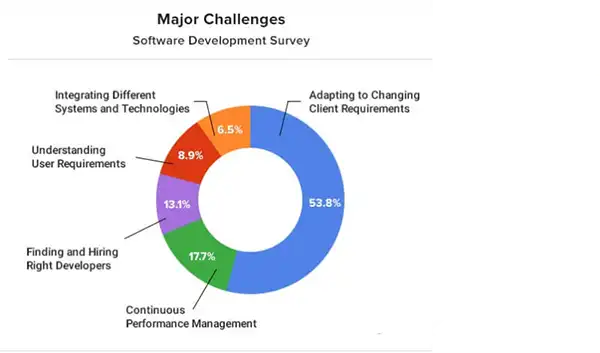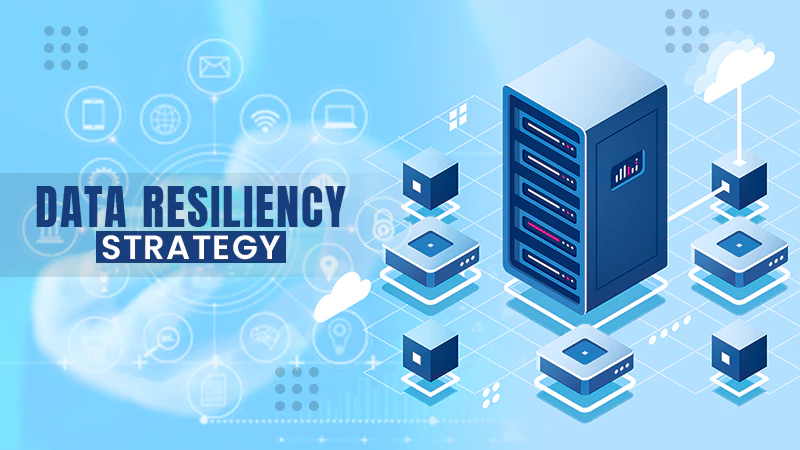Key Takeaways
- Scalability in software development is significant for cost optimization and agility.
- Scaling allows applications to handle a growing user base and fluctuating workloads effectively.
- Scalable software enhances performance, responsiveness, and user experience.
- Application scalability is defined by its flexibility and modularity, facilitating agile development and cost optimization.
In a world where technology is constantly evolving, companies need to keep up with the changing requirements. This is where scalability comes in.
It is one of the significant financial factors of the software development process. The cost of application and maintenance depends on the scalability we provide during the initial stages of the program development.
We can cut down the price associated with care and improve agility. This adaptability comes in handy when enterprises opt for custom software development.
The Benefits of Scalable Software
Building a scalable program needs experts to analyze what it needs in the beginning stages of usage in the market.
A more comprehensive vision of the application’s future is necessary, but gathering all the requirements for the features you may need after acquiring massive users is not possible.
Enterprises must focus on scaling requirements, tailor the needs with vital components for initial releases, and add new features as the customer base and app usage increase.
Slowly adding features for every new release will add value to the business and gradually cut costs, improving clients’ experience and the app’s operation and taking feedback.
Here are the top reasons why it matters in custom software development.
Handling a Growing User Base
As the software gains popularity and attracts more customers, it needs to be capable of handling increased user traffic and load.
Scalability ensures that it can accommodate growing numbers of clients and their concurrent interactions without compromising performance or audience experience.
It allows the software to scale up its resources, such as processing power, memory, and storage, to meet the demands of a more extensive customer base.
User-base Management
Scaling applications ensure enough resources like memory, power, and storage are available to serve any number of clients concurrently accessing the program.
Once it goes live, the efforts we put into gathering requirements and building a productive system start to gain customers and start receiving feedback.
Once it gets positive feedback, the popularity brings many individuals, and the app should be able to handle a massive user database without any concerns.
We are living in an age where users demand seamless and responsive software applications. Scalability guarantees that even as the numbers rise, it remains fast and reliable.
For instance, a sudden surge in user traffic can result in slow loading times, crashes, and frustrating customers. However, on the other hand, scalable applications allocate resources, distribute the workload, and maintain optimal performance.
Fluctuating workloads
Software applications, in general, experience different workloads, which sometimes need peak customer flow management and sometimes no buyer traffic.
Accordingly, changing demands in user flow will have necessary resource utilization management and cost efficiency.
Let’s take a simple example to understand this. Streaming platforms have different peak times. Evening hours are often busy for them while at night it can be low.
Once you utilize this solution, it will support the service to allocate additional resources during those peak hours and adjust according to it.
Note: Scaling applications to manage fluctuating traffic and workload is pertinent for better business outcomes.
Business Progress
Business expansion is eternal, making applications to scale future needs without restricted constraints. Incorporating new functionalities and additional features into the existing software should be manageable for businesses.
Scaling it according to the increased business transactions and user traffic is paramount to meet competitive advantage and handle new business opportunities without operation degradation.

Performance and Responsiveness
Performance and responsiveness directly correlate with the adaptability of the application.
When experiencing heavy workloads, it should use available resources to share and manage the work avoiding its working impact.
Adaptable programs provide such functionality in sharing tasks with multiple servers across the infrastructure to prevent bottlenecks and result in excellent client experience and higher engagement rates.
Agile Development and Cost Optimization
Modularity and flexibility define the application’s scalability and facilitate the agile development process.
Businesses make flexible programs that dynamically allocate resources to ensure seamless execution and minimize unnecessary expenses, cutting down unwanted burdens upfront in the initial stages of releases.
New changes to the software, adding new features, and deploying updates often without disrupting the ongoing tasks optimize cost incurrence.
Future-proofing it with scalable software architecture adds options to be prepared with unforeseen business services and adopt new technological advancements for the existing application to serve the users better.
Emerging market trends and customer expectations often lead to further changes, and scaling it to fluctuating needs also cuts the cost.







